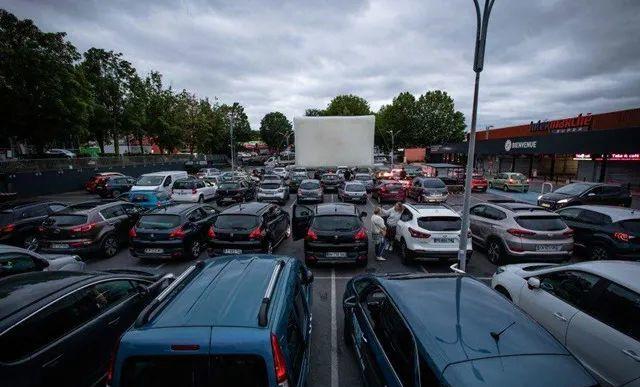At the ongoing New York International Auto Show, auto company executives predicted that if U.S. consumers want to see prices drop, they will have to wait because the shortage of vehicles is likely to continue into next year.
"It's a tough time to buy a car, but it's a good time to do the car business." Bob Carter, Head of North American Sales at Toyota Motor Corporation, described the U.S. auto market this way.
According to market research and consulting firm J.D. Power, the average transaction price of a new car nationwide was about $43,700 in March, 26 percent higher than before the pandemic, and at the end of 2019, the price was only $34,600. And in the first quarter of this year, the average profit of a U.S. auto dealer on a new car, including sales-related financing and insurance products, was about $5,000, double that of a year ago.
In addition, the situation in Ukraine has further complicated the situation. As a result, S&P Global Mobility, a forecaster for the automotive industry, has lowered its global vehicle production forecasts for this year and next by more than 5 million units. Irene Tunkel, chief strategist of the U.S. asset division of investment consultancy BCA Research, previously told First Financial Reporter that Ukraine is the main producer of automotive wire harnesses. Volkswagen, BMW and Porsche have all had to cut car production because of shortages caused by the situation in Ukraine. The shortage of metals such as palladium and nickel, which are widely used in auto parts, will also exacerbate the shortage in the auto parts market.

Demand remains strong
According to the latest data released this week by the U.S. Bureau of Labor Statistics, the national consumer price index for new cars rose 12.5% year-on-year in March, while used cars and trucks rose 35.3%. Despite rising interest rates and rising gasoline prices, demand for new cars remains strong. Michael Colleran, head of sales and marketing at Nissan Motor Company, said: "There is still a lot of pent-up demand. ”
Pieter Nota, BMW's head of global sales, said the company had recently raised prices in response to inflationary pressures across the business. But so far, that hasn't deterred buyers. "Customers are digesting this." "We don't see any signs of this demand cooling," he said. ”
Chris Hemmersmeier, a U.S. chain dealer, said most of his vehicles were already booked at his 10 dealerships in Utah, Arizona and Nevada. While he worries that rising interest rates or a possible fall in used car values will eventually weaken new car pricing and sales, the intrinsic demand from customers should still last for months.
Corina Diehl, a pittsburgh-area car dealer in the United States, also said that as the epidemic enters its third year, cars are still in short supply, and the squeeze on inventory shows no signs of lessening. "If I could get 100 Toyotas today, I could sell 100 Toyotas today. But in fact, I can get three of them. Deere said every car brand she has in her hands faces the same situation.
Steve Center, head of U.S. operations at Kia Motors, said: "It may take years for dealers' inventories to recover. So there will be no concessions, because we will sell as much as we make. ”
Will prices continue to rise?
U.S. production of motor vehicles and parts soared 7.8 percent last month, the biggest increase since October. Total assembly volumes of cars and light trucks rose to nearly 9.5 million units on a seasonally adjusted basis, the highest since January 2021 and up from 8.3 million units in the previous month.
"The automotive industry is making a comeback." Bill Adams, chief economist at Comerica Bank, said, "Production in 2021 plummeted due to chip shortages. That's reversing now as automakers grapple with challenges and look for ways to increase chip supply. ”
Still, Fed Chairman Jerome H. Powell said in a Speech in March that auto production remained below pre-pandemic levels and that the sharp drop in expected prices had been repeatedly delayed. He said that while in general it seems likely that a supply chain relief may come over time, the timing and scope are uncertain.
Arno Antlitz, the group's financial director at Volkswagen Group, recently said that the company expects semiconductor shortages to last longer than expected and that semiconductor supply will not normalize until 2024. "We believe there will be a structural supply shortage in 2022, which is only likely to ease in the third or fourth quarter." "The situation should improve in 2023, but structural problems are not yet fully resolved," he said. ”
BMW Group CEO Oliver Zipse also said in an interview with the media in April that it was still the peak of the chip shortage. "I expect we will start to see improvements next year at the latest, but in 2023 we still have to deal with the shortage." Zip said.
In addition, according to research firm Wards Intelligence, as of the end of March, there were about 1.2 million new cars parked in or on the way at U.S. car dealerships, about half of what it was a year ago and about one-third of pre-pandemic levels.
For used cars, Omair Sharif, founder of research firm Investment Insights, said that while used car prices could rise in a matter of months as U.S. households use tax rebates to buy cars, he expects modest increases, in part because used car prices are already almost on par with new car prices.
Jonathan Smoke, chief economist at industry consultancy Cox Automotive, expects new car prices to continue to rise this year, possibly even at nearly the same pace as last year, and used cars may start to cut prices, but a shortage of new cars will slow down the weakening trend of used car prices. However, if rental companies start snapping up used cars as they did in 2021, the price of used cars may not fall at all.